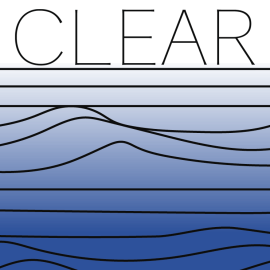Datasets
Table of Contents
These datasets are licensed under a Creative Commons Attribution 4.0 International License. This means you are free to:
- Share — copy and redistribute the material in any medium or format
- Adapt — remix, transform, and build upon the material for any purpose, even commercially.
Under the following terms:
- Attribution — You must give appropriate credit, provide a link to the license, and indicate if changes were made. You may do so in any reasonable manner, but not in any way that suggests the licensor endorses you or your use.
- No additional restrictions — You may not apply legal terms or technological measures that legally restrict others from doing anything the license permits.
Datasets: Literature reviews
- Systemic literature review: Plastic pollution research in Newfoundland and Labrador, 1962-2019. This dataset disagregates findings from 57 published articles, unpublished datasets, and grey literature papers on plastics on shorelines, in surface water, and in sediment, plastics ingested by and that entangle animals, and plastics and other litter on land that can make its way into the ocean. Data was extracted for each research site. The information was used to create CLEAR’s Regional report on plastic pollution in Newfoundland and Labrador, 1962-2019.
- Systematic literature review: Plastic ingestion figures for fishes in English-language published literature as of 2017. CLEAR conducted a systematic literature review of all published English-language ingestion figures (FO%) of all species of fishes, globally. We obtained 22 published studies and disaggregated their ingestion data by species, which provided 242 individual ingestion rates for 207 different species in 64 families. This data was used in Liboiron, F., Ammendolia, J., Saturno, J., Melvin, J., Zahara, A., Richárd, N., & Liboiron, M. (2018). A zero percent plastic ingestion rate by silver hake (Merluccius bilinearis) from the south coast of Newfoundland, Canada. Marine Pollution Bulletin, 131, 267-275.
- Systematic literature review: Plastic densities in water in the circumpolar Arctic in English-language published literature as of 2020. CLEAR conducted a sysematic literature review of all published English-language peer reviewed studies of plastics in the circumpolar Arctic, including ingestion, shoreline, and water (diving, surface, ice) studies. The ten papers provided 35 figures for individual sites. This data is used in publication that is under review entitled, “Densities and relationships of plastics in the surface water of the Eastern Arctic (Inuit Nunangat).”
- Systematic literature review: Wild and Country foods in Newfoundland and Labrador database, 500-2011 CE. For his graduate project, CLEAR member John Atkinson compiled a database organizing existing published information about who eats what, where and how in Newfoundland and Labrador with information from 8,000 years ago to 2011. Sources include peer reviewed publications, family memories, and historical documents. There are over 200 individual entries. More about the wild food consumption in NL database project can be found here, and an analysis of the data is in Aktinson, John. (2020). “A Review of Wild and Country Foods in Newfoundland and Labrador, Canada: The Importance of Key Food Sources Despite a Decrease in Consumption Over Time,” Environmental Sciences Program, Memorial University.
Datasets: Plastic pollution data
- Baseline plastic ingestion for three NL fishes- data full set, 2018. CLEAR monitors plastic ingestion figures (FO%) in fish species used for food in Newfoundland and Labrador. This dataset compiles data for all Atlantic Cod, capelin, and salmon monitored from 2015-2018, over 1000 fishes overall. It also includes data on plastics recovered in cod. This data has been summarized in: Liboiron, M., Melvin, J., Richárd, N., Saturno, J., Ammendolia, J., Charron, L., & Mather, C. (2018). Low incidence of plastic ingestion among three fish species significant for human consumption on the island of Newfoundland, Canada. Marine Pollution Bulletin, 141: 224-248. It was also used to create two Master’s theses: Melvin, J. (2017). Plastic ingestion in Atlantic cod (Gadus morhua) on the east coast of Newfoundland, Canada: results from a citizen science monitoring project, with policy recommendations for long-term monitoring (Master’s thesis, University of the Westforjs) & Richárd, N. (2019). An analysis of ingested microplastics found in offshore Atlantic cod (Gadus morhua) and inshore capelin (Mallotus villosus) using scientific and citizen science methods (Master’s thesis, Memorial University of Newfoundland).
- Plastic Ingestion Data for Silver Hake, 2018. This dataset contains fish-level data on silver hake processed for plastic pollution. It was used for the publication, Liboiron, F., Ammendolia, J., Saturno, J., Melvin, J., Zahara, A., Richárd, N., & Liboiron, M. (2018). A zero percent plastic ingestion rate by silver hake (Merluccius bilinearis) from the south coast of Newfoundland, Canada. Marine Pollution Bulletin, 131, 267-275.
- Shoreline waste in Newfoundland and Labrador, 2014-2019. This dataset uses data gathered from the Marine Debris Tracker, an app used by citizen and accredited scientists to log and geotag waste found on shorelines. The tens of thousands of entries were used in CLEAR’s Regional report on plastic pollution in Newfoundland and Labrador, 1962-2019.
- Power analysis for plastic ingestion studies, Newfoundland and Labrador, 2019. A power analysis can tell scientists how large their sample size must be to observe a population-level change in plastic ingestion figures for specific species. This power analysis covers all species for which there are at least two ingestion studies in NL, and was used in CLEAR’s Regional report on plastic pollution in Newfoundland and Labrador, 1962-2019.
